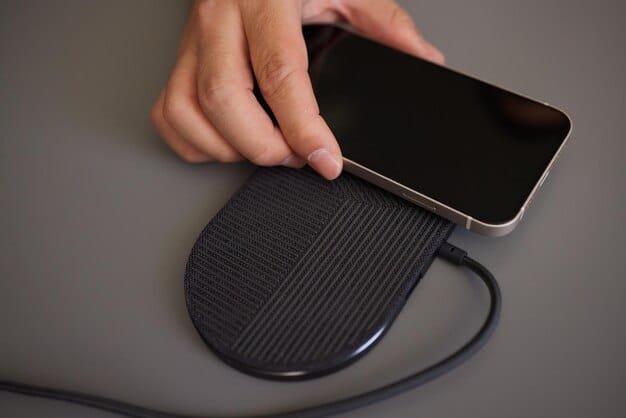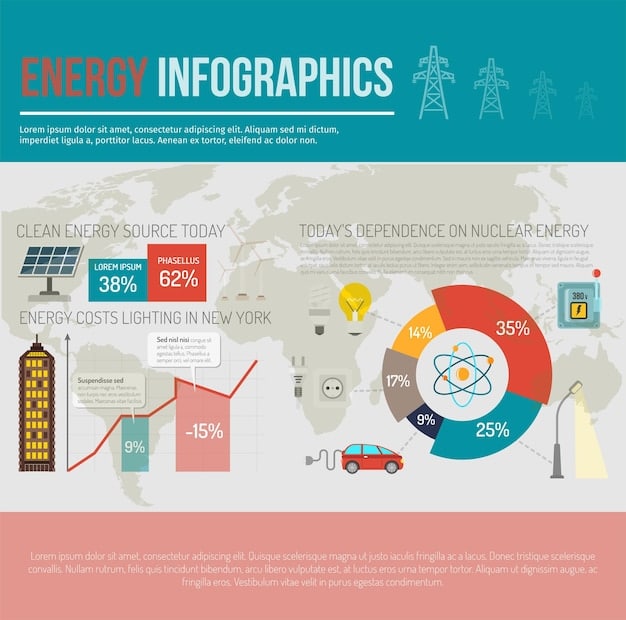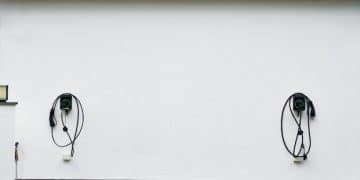Wireless Charging: The Latest Innovations for Smartphones in 2025

The Latest Innovations in Wireless Charging Technology for Smartphones include advancements in charging speed, range, efficiency, and compatibility, shaping the future of how we power our mobile devices.
Tired of tangled wires and slow charging times? The Latest Innovations in Wireless Charging Technology for Smartphones are revolutionizing how we power our mobile devices, offering faster speeds, greater convenience, and a glimpse into the future of charging.
Understanding Wireless Charging Technology
Wireless charging, once a novelty, is now a mainstream feature in many smartphones. But how does it actually work? Let’s dive into the basics of this convenient technology.
The Science Behind Wireless Charging
Wireless charging relies on the principle of electromagnetic induction. This process involves transferring energy between two objects through an electromagnetic field.
Qi Standard and Its Evolution
The Qi standard is the dominant wireless charging standard used in smartphones. It was developed by the Wireless Power Consortium (WPC) and has gone through several iterations to improve charging speed and efficiency.
- Qi allows for efficiently charging a mobile phone.
- Offers a safe and reliable charging experience.
- It reduces energy usage by eliminating unnecessary power consumption.
- The organization supporting it continually tries to improve upon it.
In essence, wireless charging technology has evolved significantly. Wireless charging has changed how phones are powered, improving convenience and performance.

Faster Charging Speeds: Beyond 15W
One of the most significant advancements in wireless charging is the increase in charging speeds. Early wireless chargers were notoriously slow, but recent innovations have dramatically improved performance.
The Shift to Higher Wattage Charging
Wireless charging speeds have steadily increased, with many smartphones now supporting 15W or higher. This allows for faster charging times, bringing wireless charging closer to the speed of wired charging.
Custom Solutions and Proprietary Technologies
Some manufacturers have developed their own proprietary wireless charging technologies to further increase speed. These solutions often require specific chargers and devices but can deliver significantly faster charging times.
Many companies are looking into other solutions in order to create faster wireless charging. Ultimately this would increase product sales.
Expanding the Charging Range: Far-Field Wireless Power
Traditional wireless charging requires close contact between the device and the charging pad. However, far-field wireless power technologies are emerging, promising to charge devices at a distance.
What is Far-Field Wireless Charging?
Far-field wireless charging uses radio waves, lasers, or other technologies to transmit power over the air. This allows devices to be charged without being placed on a charging pad.
The Potential and Challenges of Over-the-Air Charging
Over-the-air charging has the potential to revolutionize how we power our devices, but it also faces significant challenges, including efficiency, safety, and regulatory hurdles.
- Increasing safety measurements can prevent danger during charging.
- It would be more practical and easy to find than normal charging.
- The technology relies on high radio waves.
- It saves the time of consumers.
Therefore, far-field wireless power can change the way charging works. The new format is innovative but still has some things to improve upon before reaching its full potential.
Improving Efficiency: Reducing Energy Loss
Efficiency is a critical factor in wireless charging. Energy loss during the transfer process can lead to slower charging times and wasted power. Innovations in materials and design are helping to improve efficiency.
Optimizing Coil Design and Materials
The design and materials used in the charging coils play a crucial role in efficiency. New coil designs and materials with higher conductivity can reduce energy loss and improve charging speed.
Advanced Power Management Systems
Advanced power management systems can optimize the charging process and minimize energy loss. These systems use sophisticated algorithms to control the flow of power and adjust charging parameters in real-time.

Enhancing Compatibility: Universal Wireless Charging Standards
Compatibility is another important consideration for wireless charging. The lack of a universal standard can lead to confusion and frustration for consumers. Efforts are underway to promote greater compatibility across devices and chargers.
The Push for a Unified Standard
A unified wireless charging standard would simplify the charging process and ensure that devices and chargers are compatible. This would benefit both consumers and manufacturers.
Cross-Platform Support and Open Standards
Some companies are promoting cross-platform support and open standards to encourage greater compatibility. This would allow devices from different manufacturers to be charged using the same chargers.
Compatibility among chargers has been a significant inconvenience. Fixing it would create a positive outlook for consumers and their products.
Future Trends in Wireless Charging for Smartphones
The future of wireless charging is bright, with many exciting developments on the horizon. From resonant inductive coupling to millimeter-wave charging, the possibilities are endless.
Resonant Inductive Coupling
Resonant inductive coupling is a technology that allows for greater flexibility in positioning the device on the charging pad. It also enables charging through non-metallic materials.
Millimeter-Wave Charging
Millimeter-wave charging uses high-frequency radio waves to transmit power over the air. This technology has the potential to deliver faster charging speeds at a distance.
- Power is transferred from a distance.
- A new age of charging is being born.
- Wireless Charging will be more prominent.
- Wireless charging is always improving.
Overall, wireless charging solutions can provide convenience and ease of experience. The charging experience can ultimately be changed to a better standard in the future.
The Impact of Wireless Charging on Smartphone Design
Wireless charging has had a significant impact on smartphone design. The removal of charging ports can lead to slimmer devices and more room for other features.
Slimmer Designs and Increased Durability
By eliminating the need for a charging port, manufacturers can create slimmer and more durable smartphones. This can also lead to improved water resistance and dustproofing.
New Materials and Form Factors
Wireless charging also opens up new possibilities for materials and form factors. Manufacturers can experiment with different materials that are more conducive to wireless charging.
| Key Point | Brief Description |
|---|---|
| ⚡ Faster Charging | Speeds beyond 15W through new technologies. |
| 📡 Far-Field Power | Charging at a distance using radio waves. |
| 💡 Efficiency | Reducing energy loss with optimized designs. |
| 📱 Compatibility | Universal standards for broader device support. |
Frequently Asked Questions
▼
Wireless charging operates using electromagnetic induction, which transfers energy between the charger and the phone without needing a physical connection.
▼
Historically, yes; however, newer technologies are improving wireless charging speeds. This will make them more comparable to traditional wired charging methods.
▼
It depends on compatibility. Most smartphones use the Qi standard, but some may support only proprietary charging technologies.
▼
Typically, yes. Wireless is generally less energy efficient due to energy loss during electromagnetic transfer, but efficiencies are improving.
▼
No, devices have battery management settings that prevent overcharging and protect the battery’s health when using wireless charging systems.
Conclusion
In conclusion, the evolution of wireless charging technology for smartphones is marked by significant advancements in speed, range, efficiency, and compatibility, signaling a future where wireless power becomes a ubiquitous and seamless aspect of our mobile experience.





